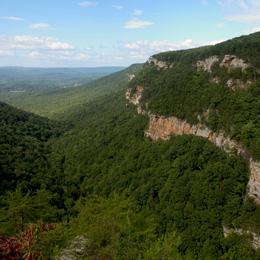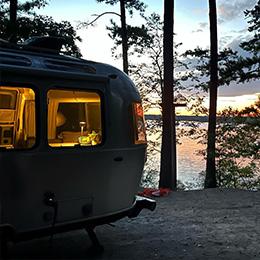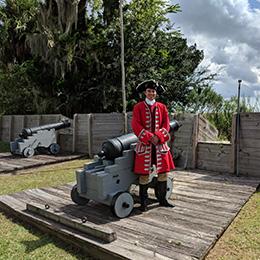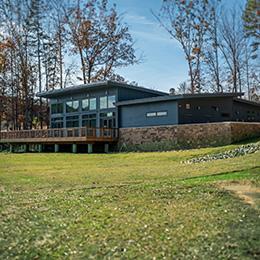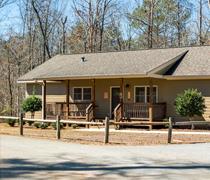Some of Georgia's many natural resources include:
- forests and lumber
- rivers and lakes
- coastal shores
- marshes and wetlands
- farmland
- marble
- minerals
- manganese
- iron ore
- copper
- coal
- oil
- clays
- stone
- kaolin
- sand
- gravel
- fish
- game
- wildlife
Georgia, the largest state east of the Mississippi river, has almost eight million acres of farmland classified as "prime,"which may be defined as available land that is best suited for producing food or fiber. That is, Georgia has the soil quality, growing season, and moisture supply necessary to produce sustained yields of crops.
Much of Georgia (over 60%) is heavily forested with pine, and the state is the leading state east of the Mississippi in the production of lumber (logs and boards) and pulpwood. From its vast stands of pine come more than half of the world's resins and turpentine and 74.4 percent of the U.S. supply. Georgia has approximately 24 million acres of commercial forest land, more than any other state. Georgia also has more acres in forest management than any other state.
Georgia is by far the leading clay-producing state in America and is recognized as a world leader in the mining, production, processing, and application of kaolin products. According to the U.S. Geological Survey, more than 8 million metric tons of kaolin are mined from Georgia each year, with an estimated value of more than $1 billion.
Georgia is also famous for its fine marble.
Georgia has 70,150 miles of streams and rivers, over 425,000 acres of lakes, and over 4,500,000 acres of freshwater wetlands. Georgia's abundant water supplies provide drinking water; recreational areas ideal for swimming, fishing and boating; and water for generating hydroelectric power. Some of Georgia's largest lakes include:
- Clarks Hill Lake, 78,000 acres
- Lake Hartwell, 56,000 acres
- Lake Walter F. George, 45,700 acres
- Lake Eufaula, 45,180 acres
- Lake Sidney Lanier, 38,000 acres
- Lake Seminole, 37,500 acres
- Lake Russell, 26,650 acres
- West Point Lake, 25,900 acres
- Lake Oconee, 19,050 acres
- Lake Sinclair, 15,330 acres
- Lake Allatoona, 12,010 acres
A tremendous number of Georgians enjoy outdoor recreation of all types, including hunting, fishing, and boating. Because of that, Georgians are probably more attuned to a clean environment than the average American. Georgia's topography ranges from the mountains in the north to the sea coast and swampland in the south. We strive to maintain clean air and water and to make the best use of our resources to benefit Georgia's economy and citizens.



